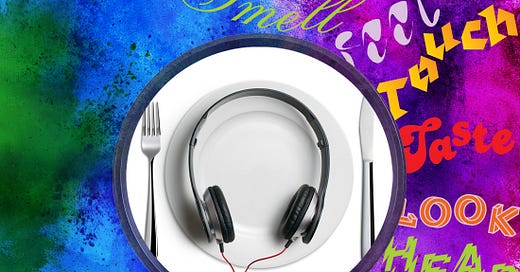Sensorium #DIY crossmodal burger tasting
Can persuasive typography change the taste of your burger? Find out how typographic and sonic seasoning work.
You consume type every day. The words you read (the fonts they appear in and what they spell out) engage all your senses. They can make your mouth water, trigger Proustian memories or they transform what you feel and taste.
At the end of this article you’ll find a DIY crossmodal tasting for you to do at home. The tasting features type, words, sound and flavour. Just add your favourite plant-based or beef burger.
Where did the taste-changing burger idea come from?
A few years ago a friend said “Have you tried McDonald’s since they changed to organic beef? You can really taste the better quality burgers.”
I was perplexed. I’d read that fast food chain McDonald’s had commissioned a new typeface to reflect their move to recycled packaging. I did some investigating and confirmed this. The ingredients and recipes hadn’t changed, it was only the packaging that had changed. The new recycled packaging now featured a big, condensed display typeface with a distressed look1.
My friend’s subconscious brain saw the new distressed style typeface on the burger packaging and assumed it was code for ‘organic’. Her expectations altered the actual experience of the food she ate. The distressed style was applied to the name of the burger, so her subconscious mistook the intended code of ‘recycled packaging’ for ‘organic burger’. Her brain linked the style directly to the word.
Food packaging is regulated by strict rules. You can’t say ‘organic’ if it’s not. You can’t say ‘handmade’ if it’s mass produced. You can’t have photographs of free range cows if they’re not. But a typeface applied to the right words can imply all of this, without actually saying it.
This is a powerful example of typographic seasoning, even if it was unintentional.






